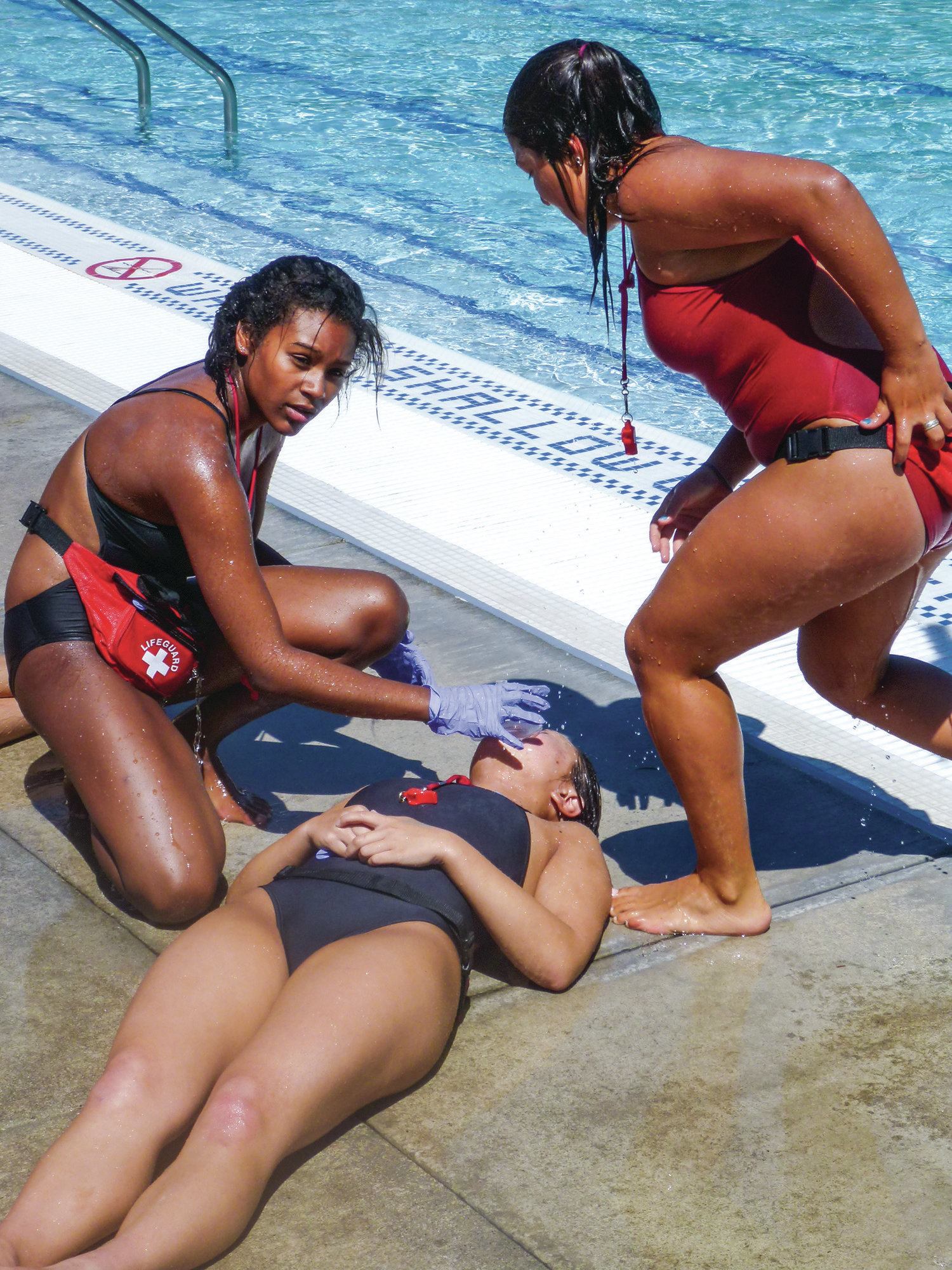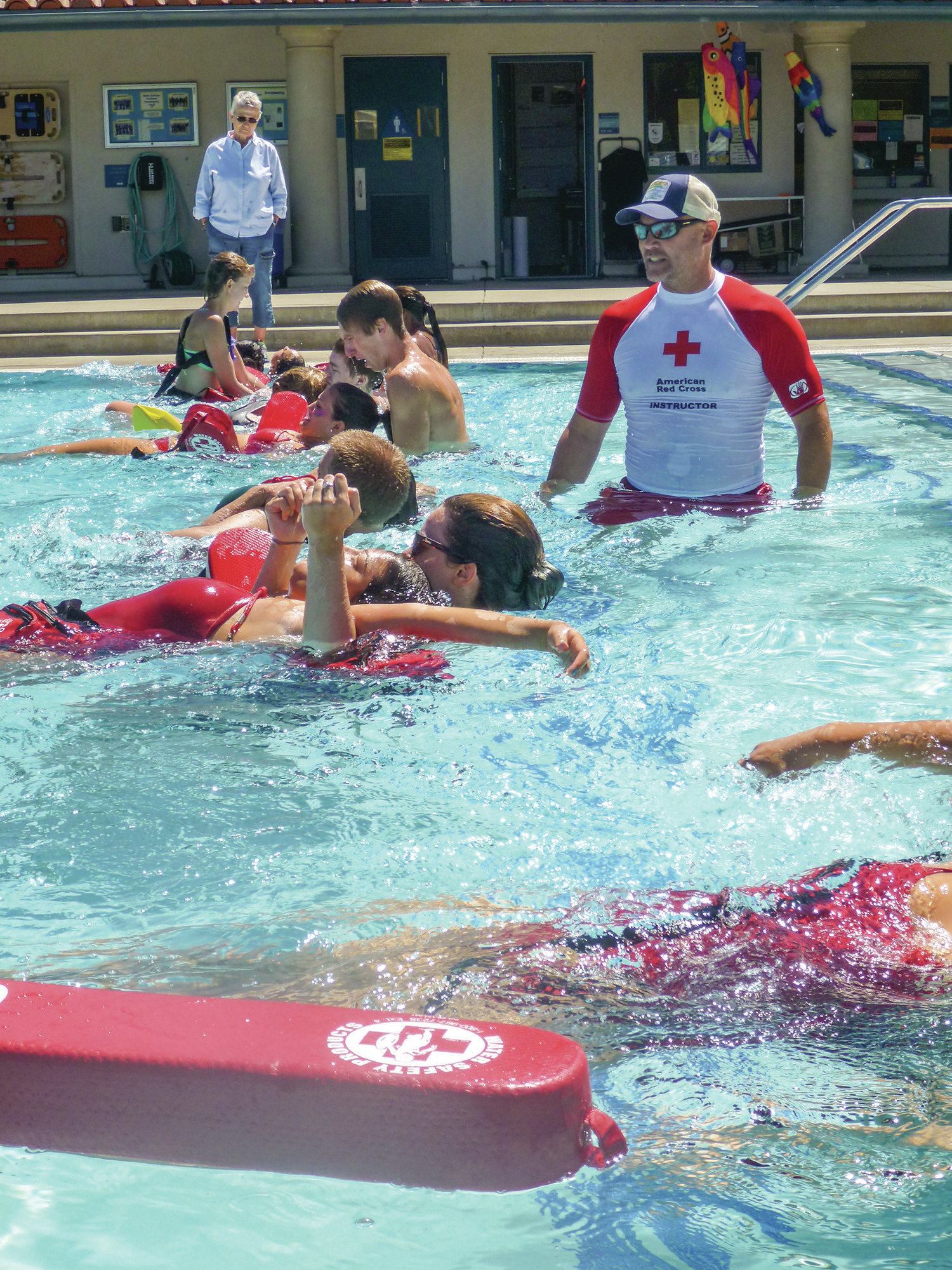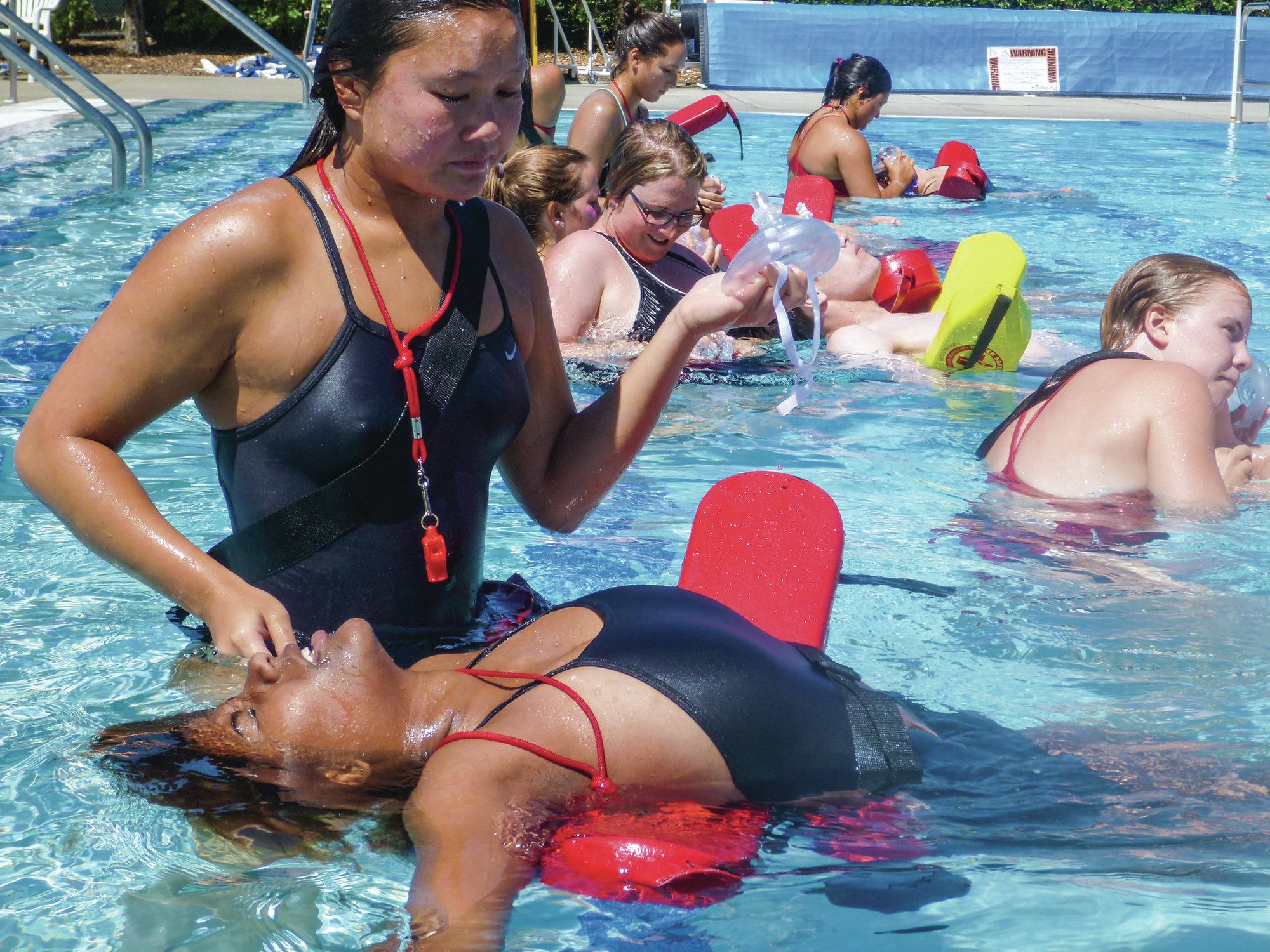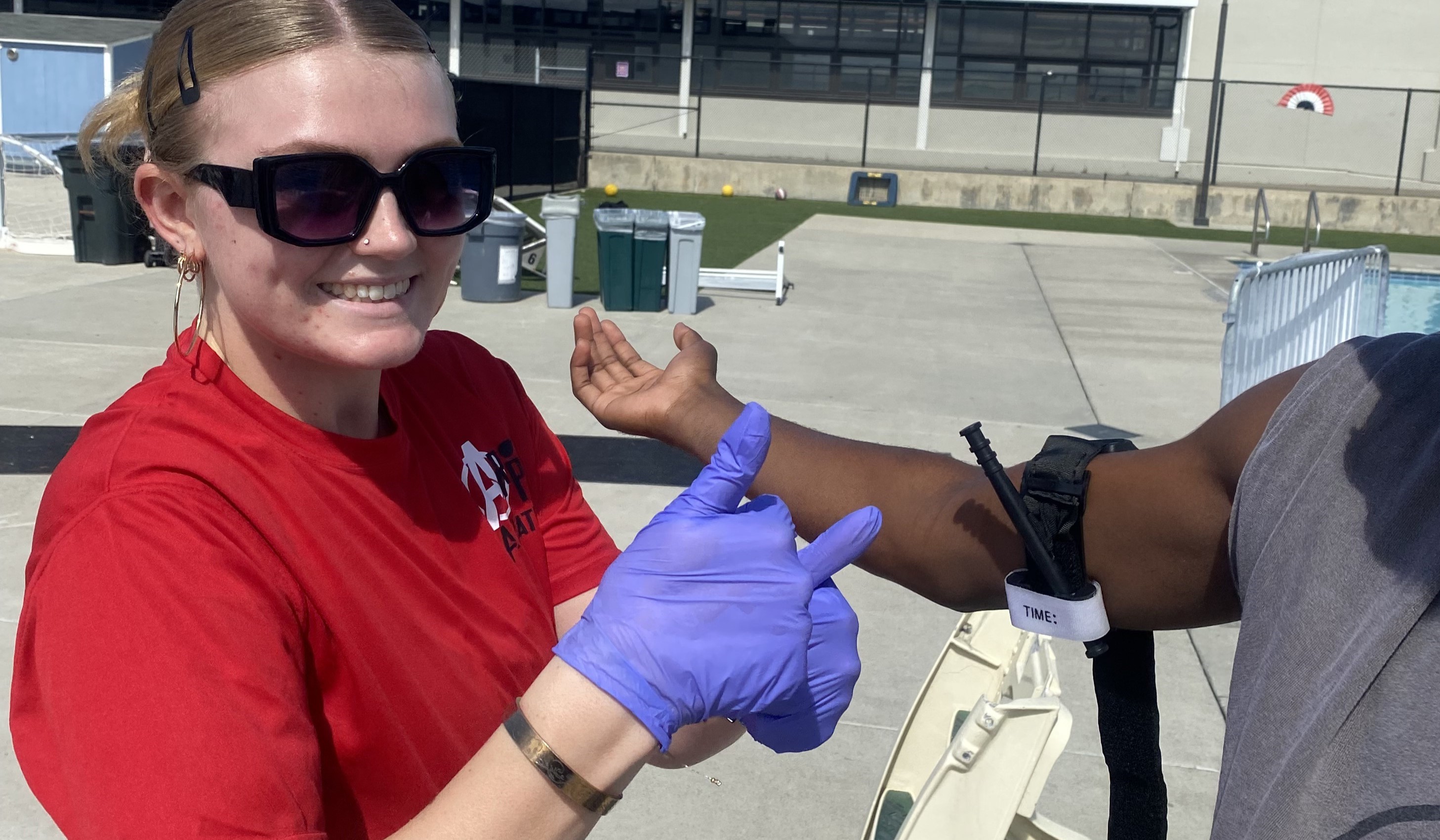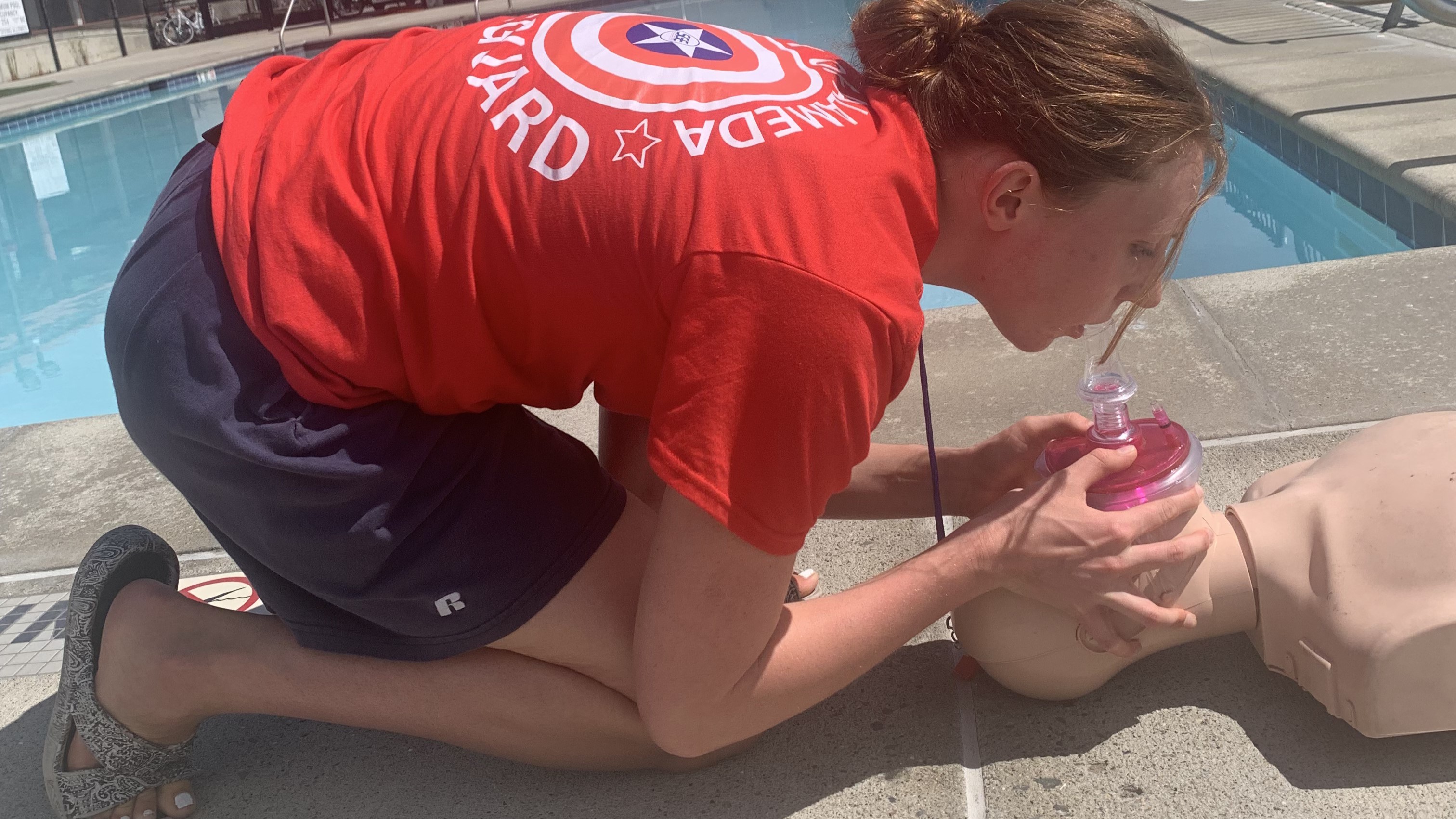Emily Plurkowski
Building blocks: Teach your lifeguards to adapt to change. Just …
Dedicating several in-service trainings to scenarios will greatly improve the performance of your lifeguard team. Scenarios provide a snapshot of the competency of your staff and help indicate whether or not previous in-service trainings have been effective. Scenarios are dramatic enactments of possible critical incidents that may occur at your facility. They allow lifeguards to build teamwork skills while exploring possible rescue, extrication and treatment pathways in a non-critical environment. This type of exploration is necessary for guards to be successful during critical incidents.
Scenarios push lifeguards to quickly analyze the situation presented and determine the best course of action. They force guards to coordinate their efforts and act swiftly. Success often requires guards to perform strings of complex skills consecutively and simultaneously to meet the scenario’s objective.
As a trainer, it is important to have a critical eye and differentiate between a guard who can demonstrate proficiency in multiple skills one at a time and a guard who can demonstrate proficiency of multiple skills that are strung together. This also is true for a lifeguard team that can only perform in a handful of specific situations and a team that adapts to the situation as the scenario or incident changes and progresses.
Trainers must be conscious of the big picture and avoid the pitfalls that can cause the scenario to lose its potency. Trainer pitfalls include:
An unclear scenario objective
No time limits within the scenario
Too much feedback, which obscures the priorities within the scenario
Ineffective management of time and progression, failing to get the lifeguard team to the objective
Not allowing the guards to work through challenges
Becoming aware of these pitfalls can help trainers avoid them while increasing the success of scenarios. To avoid these pitfalls, follow these recommendations:
Clarify scenario objectives: Trainers must break the scenario elements down into its drill components to determine which drills must be performed to complete the objective. Once this is done, the trainer must determine the drill combinations and sequence necessary to accomplish the objective and complete the scenario.
Establish time limits within the scenario: Setting time limits for each drill within the scenario creates urgency for the lifeguards. This is crucial for the team to perform effectively during a critical incident. If not monitored, a sense of urgency can be lost during the time in-between drill repetitions; all trainings should include drill reset times to keep the level of urgency present. Reset times direct the guard team to prioritize equipment prep and assign team member duties. Drill reset times should be no more than 15 seconds.
Individual drills within the scenario should have short, reachable mini-objectives that can be achieved within 15-30 seconds. Combination drills are the pairing of individual drills that the lifeguard team has already become proficient in. Combination drills are more complex but should go smoothly if your team’s ability to multitask and work as a group is there. Time limits on combination drills should last only up to 1½ times longer than regular drill times.
Provide clear, single-focused feedback: Feedback should be given immediately following the drill. It should be constructive on only one point to improve. Providing more than one feedback point disperses focus and reduces success. Continue this type of feedback strategy until all necessary points are covered to meet the objective. Feedback also can include a demonstration to assist the lifeguards in understanding the drill. When the guards are successful in achieving the objective, have them repeat the drill to verify their proficiency.
Manage lifeguard pacing through the scenario: Pacing and progress through the scenario should be a priority of the trainer. The guard team should expect the trainer to lead them through drills and activities that help them achieve the objective. If the team hits a roadblock with a particular drill, it is the trainer’s responsibility to develop an alternative plan or variation to the drill that allows the team to move forward. Similarly, if the scenario breaks down it should be easy to determine which drill elements need more practice. Keep your drill repetitions to no more than 8-10 times or stagnation will begin to set in. If you notice your staff begin to lose energy and get distracted, move to a new drill.
Allow the lifeguards to work through challenges: The trainer must be patient and allow the primary rescuer to remain the primary rescuer until he or she reaches proficiency. A common mistake is to rotate the primary rescuer after each drill repetition. There might be concern that the secondary rescuer won’t get the opportunity to learn or participate in the role of the primary rescuer, but recognize that the secondary rescuer is learning how to support the primary rescuer and what the primary rescuer expects of them. Scenarios are exploration time; let the lifeguards have it.
Once the team is proficient in the scenario, the trainer can add some variations such as changes in the wet/dry environment, team staffing and equipment failure. These variations allow the team to problem solve and develop creativity.
As with everything, the trainer needs to prepare and practice his or her delivery of the scenario for the guard team to reach success. Practice is just as important for the trainer as it is for the lifeguards.
1-hour in-service training session on scenarios:
Up to 4 minutes Briefing/suit up
Up to 4 minutes Drill A
Up to 4 minutes Drill B
Up to 5 minutes Combination Drill 1
Up to 4 minutes Drill C
Up to 5 minutes Combination Drill 2
Up to 4 minutes Drill D
Up to 4 minutes Drill E
Up to 5 minutes Combination Drill 3
15 minutes or more Scenario, if team demonstrates proficiency, add variation(s) if time allows
No more than 6 minutes Debriefing/clean-up.
